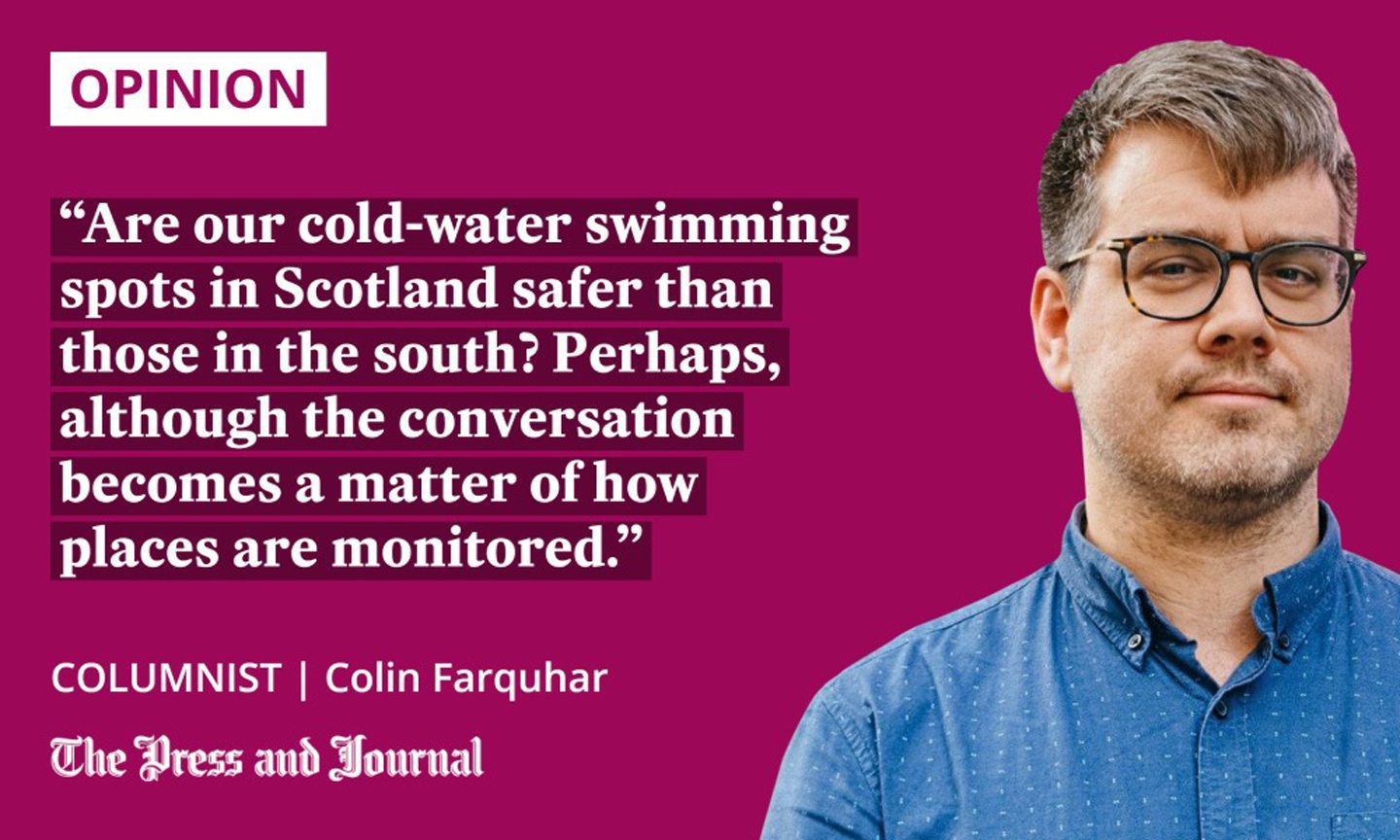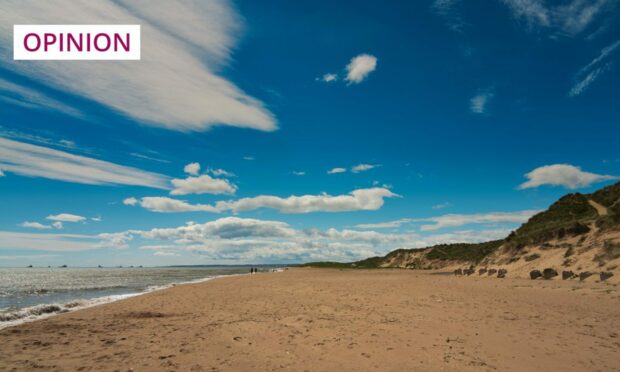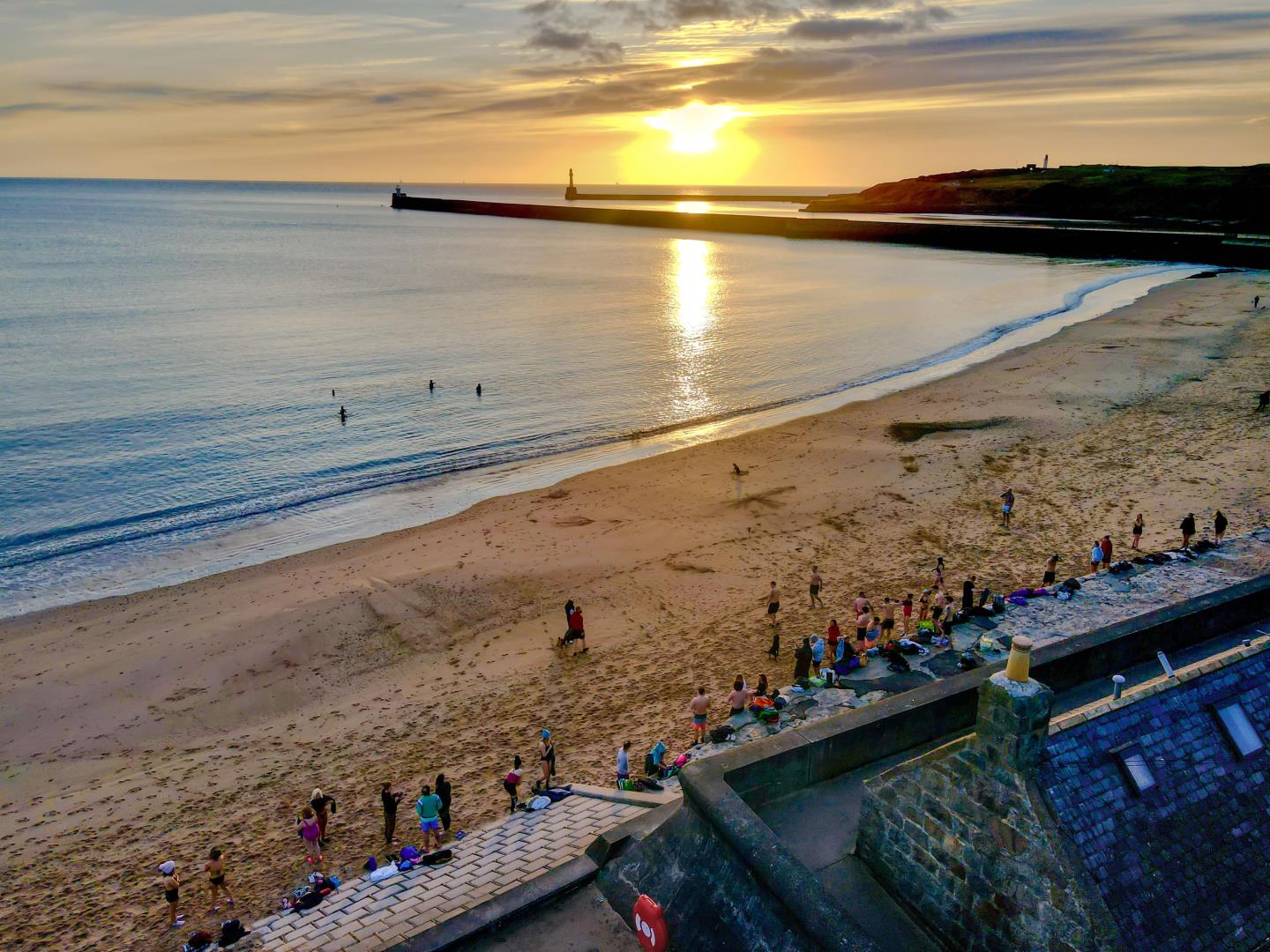On Sunday morning, I went for a swim in the sea.
“You’re a true Viking,” said my partner’s Mum as I emerged, shivering cold and wet. She’d know, being a Dane herself.
It was the first time I’d braved a swim in the Scottish outdoors for a while. The last was at Banff Links and, as we know, even deep into July and August, the waters of the North Sea can be nippy, and are best avoided by those of us of a less hardy constitution.
But this is a different coast and a different sea. We’re on holiday at Cove on the Rosneath peninsula, a short hop over the hill from Loch Lomond. Gare Loch is to the east, and Loch Long to the west.
The seas are brackish, tidal and choppy, and perhaps a pinch warmer than the North Sea. They run north to the Arrochar Alps, and south to the Firth of Clyde, past Greenock, Arran and on to Northern Ireland
The weather has been that of a typical west coast Scottish summer, with heavy bursts of flashing rain followed by short, striking sunshine. High hills border the lochs, with low cloud cover near permanently over them. The whole area is a strange collaboration of desolate natural beauty and industrial wreckage, with Faslane and the Finnart Oil Terminal nearby.
The water is clean, clear and refreshing. After scrambling back up the shore and shingle to the house, I felt lucky that Scotland’s public beaches and seaways can, for the most part, be enjoyed without fear of sewage or sickness.

In England, hardly a week seems to go by without another scandal about how the same outdoor pursuits cannot currently be undertaken safely. Fifty-seven swimmers fell sick with diarrhoea in Sunderland after competing in the World Triathlon Championship Series, with part of the event held at Roker Beach.
Lawsuits are being brought against six private water companies in England for not accurately reporting sewage dumping, seeking millions of pounds of compensation for the public. The water companies are failing the environment and the people.
Are our waters as clear as we think?
After my swim, a submarine emerges from the Gare Loch, turns left and pushes slowly, sleekly, down the Firth of Clyde and away from us. It is huge, the sea appearing to run from its path as it glides forward. Through binoculars, the crew can be made out, standing solidly upon the deck. The sub seems far more at ease in the same water that bore me back to the land only an hour before.
On its journey, it will carry on past the Gourock outdoor swimming pool, then Millport Bay and Prestwick Beach. Gourock pool uses filtered water from the sea. Sepa, the Scottish Environmental Protection Agency, has rated the water quality at Millport and Prestwick as “good” and “excellent”, respectively. You wonder how waters which carry so much industry and shipping stay so clear.
Aberdeen, Peterhead, Stonehaven and Balmedie are some of the many beaches in the north-east that also receive “good” or “excellent” tags from Sepa. It’s brilliant news for those who regularly partake in cold-water swimming at these locations, and there has been quite the boom in recent years. Braver than I, they report health benefits like higher immunity and lower blood pressure, and spiritual well-being from the activity.
Are our cold-water swimming spots in Scotland safer than those in the south? Perhaps, although the conversation becomes a matter of how places are monitored, reported and interpreted.
Is the Scottish model of public ownership a better way forward for water management than the stramash of private companies in England? Perhaps, but we shouldn’t get complacent.
We have to protect nature – and our health
Sewage-dumping is highly monitored across England’s waterways network, whereas in Scotland there is a lack of data, with only around 10% of sewage overflows monitored. Scottish Water plans huge investment in this area. It demonstrates the necessity of infrastructural investment and development, and the need for a coordinated approach.
9.3 million cubic metres of wastewater was released through that time – the fifth highest in the UK
Once I’m dry, I read that Helensburgh’s wastewater treatment works averaged two sewage spills a day between 2016 and 2020: the most in Scotland. And 9.3 million cubic metres of wastewater was released through that time – the fifth highest in the UK. I wonder how long it would take me to swim around Rosneath and across the Gare Loch to get there.
By afternoon, the submarine has disappeared from view, and my partner asks me if I’d like to get back in the water for a short swim. The rain starts again, and I say no.
I look at the clear water from the shore, the chop lapping around the rocks, and think about the cold and what else there might be under the surface. I think about how important it is to protect these spots of such natural beauty.
Colin Farquhar works as a creative spaces manager and film programmer in the north-east culture sector

